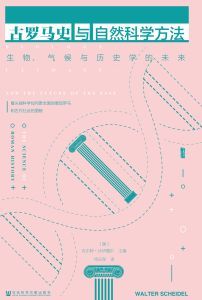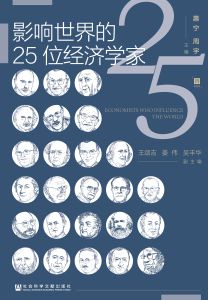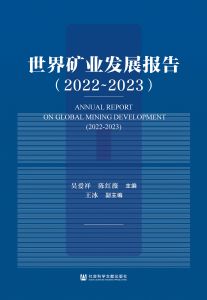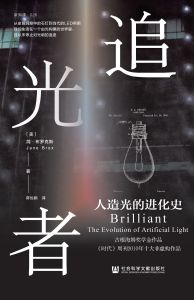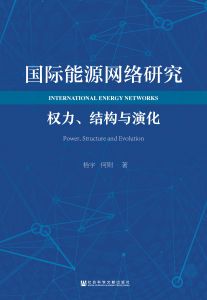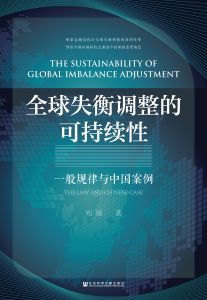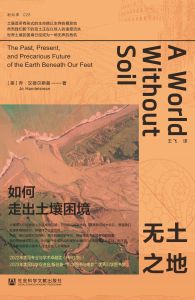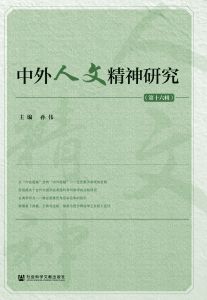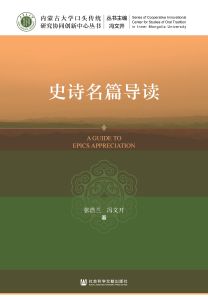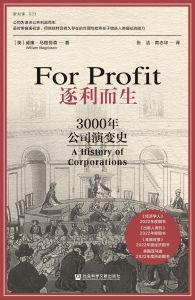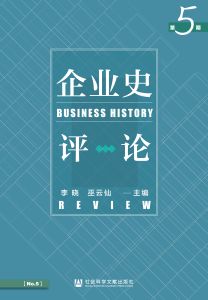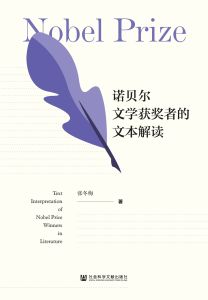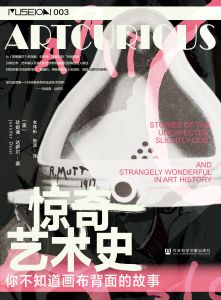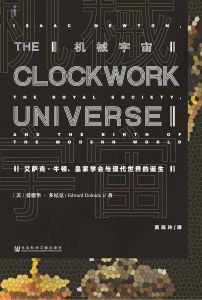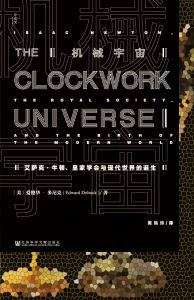首页 >
图书详情
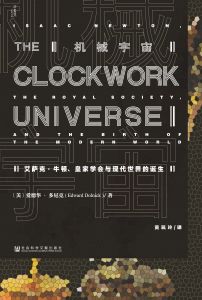
图书简介
目录
参考文献
音频
视频
这是一本想了解科学史的人不能不读的难得佳作。我们可以通过作者通俗而不失生动的叙事,认识那个天才成群结队的时代,认识科学与现代世界的关联,认识人类世界的科学史。这是历史上首度透过科学社群的集体力量寻找描述宇宙的简洁的数学形式。作者认为,他们努力的成果,永远改变了人看待自己和自身地位的方式。本书结合历史和科学,描绘一幅引人入胜的科学家群像,他们所揭示的答案在今日仍旧是我们理解世界的关键。
[展开]
-
第一部分 混乱的局势
-
1.伦敦,1660年
-
2.撒旦的魔爪
-
3.世界末日
-
4.死亡包围着街道
-
5.忧郁的街道
-
6.伦敦大火
-
7.上帝的创作
-
8.解放世界的想法
-
9.欧几里得和独角兽
-
10.少年俱乐部
-
11.突围!
-
12.狗和无赖
-
13.一剂毒药
-
14.螨虫和人
-
15.没有观众的一出戏
-
16.将一切拆解成碎片
-
-
第二部分 希望与怪兽
-
17.前所未见
-
18.像羊一样大的苍蝇
-
19.从蚯蚓到天使
-
20.畸形动物满街走
-
21.在美景前浑身发抖
-
22.由想法所创造出的模式
-
23.上帝的奇怪密码
-
24.秘密计划
-
25.喜悦的泪水
-
26.金鼻海象
-
27.打开宇宙的保险箱
-
28.桅杆瞭望台的景观
-
29.人造卫星轨道,1687年
-
30.呼之欲出
-
31.两块石头和一根绳子
-
32.墙上的一只苍蝇
-
33.赤裸的美景
-
34.这里有怪物!
-
35.对抗野兽
-
36.从漩涡中脱身
-
-
第三部分 曙光乍现
-
37.人人生而平等
-
38.奇迹岁月
-
39.解开所有奥秘
-
40.会说话的狗和意料之外的权力
-
41.特写下的世界
-
42.当电梯的电缆断裂
-
43.最大的争议
-
44.争斗结局
-
45.苹果和月球
-
46.造访剑桥
-
47.牛顿胜出
-
48.与胡克先生之间的纷争
-
49.世界体系
-
50.只有三个人
-
51.恰到好处的疯狂
-
52.寻找上帝
-
53.结论
-
[1][1]Ackroyd,Peter. Newton . New York:Doubleday,2006.
[2][2]Adler,Alfred. “Mathematics and Creativity.” New Yorker ,February 19,1972.
[3][3]Armstrong,Karen,A History of God:The 4000-Year Quest of Judaism,Christianity,and Islam. New York:Ballantine,1993.
[4][4]Ashenburg,Katherine. The Dirt on Clean . New York:North Point,1997.
[5][5]Atkins,Peter. Galileo’s Finger:The Ten Great Ideas of Science . New York:Oxford University Press,2003.
[6][6]Barrow,John. The Infinite Book:A Short Guide to the Boundless,Timeless,and Endless . New York:Vintage,2006.
[7][7]Barzun,Jacques. From Dawn to Decadence :500 Years of Western Cultural Life . New York:HarperCollins,2000.
[8][8]Beer,Anna. Milton:Poet,Pamphleteer,and Patriot . London:Bloomsbury,2009.
[9][9]Bell,E.T. The Development of Mathematics . New York:McGraw-Hill,1945.
[10][10]Benson,Donald. A Smoother Pebble:Mathematical Explorations . New York:Oxford University Press,2003.
[11][11]Berlin,Isaiah. The Age of Enlightenment . Boston:Houghton Mifflin,1956.
[12][12]Berlinski,David. Infinite Ascent:A Short History of Mathematics . New York:Modern Library,2008.
[13][13]Blackburn,Simon. Think . New York:Oxford University Press,1999.
[14][14]Bochner,Salomon. The Role of Mathematics in the Rise of Science . Princeton,NJ:Princeton University Press,1979.
[15][15]Bondi,Hermann. Relativity and Common Sense:A New Approach to Einstein . New York:Dover,1962.
[16][16]Boorstin,Daniel. The Discoverers . New York:Random House,1983.
[17][17]Boyer,Carl. The History of the Calculus and Its Conceptual Development . New York:Dover,1949.
[18][18]Bronowski,Jacob. The Ascent of Man . Boston:Little,Brown,1973.
[19][19]Brooke,John. “The God of Isaac Newton.” In Fauvel et al.,eds.,Let Newton Be !Brown,Gregory. “Personal,Political,and Philosophical Dimensions of the Leibniz-Caroline Correspondence.” in Paul Lodge,ed.,Leibniz and His Correspondents . New York:Cambridge University Press,2004.
[20][20]Burtt,E.A. The Metaphysical Foundations of Modern Science . New York:Doubleday,1954.
[21][21]Butterfield,Herbert. The Origins of Modern Science . New York:Macmillan,1953.
[22][22]Cantor,Norman. In the Wake of the Plague . New York:Simon & Schuster,2001.
[23][23]Carey,John. John Donne:Life,Mind,and Art . London:Faber & Faber,1981.
[24][24]Caspar,Max. Kepler . New York:Dover,1993.
[25][25]Cassirer,Ernst. “Newton and Leibniz.” Philosophical Review 52,no.4(July 1943),pp.366-91.
[26][26]Chandrasekhar,S. “Shakespeare,Newton,and Beethoven,or Patterns in Creativity.” http://www.sawf.org/newedit/edit02192001/musicarts.asp.
[27][27]Chapman,Allan. England’s Leonardo:Robert Hooke and the Seventeenth-Century Scientific Revolution . New York:Taylor & Francis,2004.
[28][28]Christianson,Gale. In the Presence of the Creator:Isaac Newton and His Times. New York:Free Press,1984.
[29][29]Christianson,Gale.. Isaac Newton . New York:Oxford University Press,2005.
[30][30]Christianson,Gale.. “Newton the Man—Again.” In Paul Scheurer and G.Debrock,eds.,Newton’s Scientific and Philosophical Legacy . New York:Springer,1988.
[31][31]Cockayne,Emily. Hubbub:Filth,Noise and Stench in England . New Haven,CT:Yale University Press,2007.
[32][32]Cohen,I.Bernard. “Newton’s Third Law and Universal Gravity.” Journal of the History of Ideas 48,no.4(October-December 1987),pp.571-93.
[33][33]Cohen,I.Bernard.. Revolution in Science . Cambridge,MA:Harvard University Press,1985.
[34][34]Cohen,I.Bernard.. Science and the Founding Fathers:Science in the Political Thought of Thomas Jefferson,Benjamin Franklin,John Adams,and James Madison . New York:Norton,1997.
[35][35]Cook,Alan. “Hailey and Newton’s Principia .” Notes and Records of the Royal Society of London 45,no.2(July 1991),pp.129-38.
[36][36]Crease,Robert. The Prism and the Pendulum:The Ten Most Beautiful Experiments in Science . New York:Random House,2003.
[37][37]Dantzig,Tobias. Number:The Language of Science . New York:Macmillan,1954.
[38][38]Daston,Lorraine,and Katharine Park. Wonders and the Order of Nature,1150-1750 . New York:Zone,2001.
[39][39]Davis,Martin. The Universal Computer . New York:Norton,2000.
[40][40]Davis,Philip,and Reuben Hersh. The Mathematical Experience . Boston:Birkhauser,1981.
[41][41]De Santiliana,Giorgio. The Crime of Galileo . Chicago:University of Chicago Press,1955.
[42][42]Drake,Stillman,“The Role of Music in Galileo’s Experiments.” Scientific American ,June 1975.
[43][43]Dunham,William. The Calculus Gallery:Masterpieces from Newton to Lebesgue. Princeton,NJ:Princeton University Press,2005.
[44][44]Dunham,William.. Journey Through Genius:The Great Theorems of Mathematics . New York:Penguin,1990.
[45][45]Dyson,George. Darwin Among the Machines . Reading,MA:Perseus,1997.
[46][46]Eamon,William. Science and the Secrets of Nature:Books of Secrets in Medieval and Early Modern Culture . Princeton,NJ:Princeton University Press,1994.
[47][47]Eco,Umberto. The Search for the Perfect Language . Waukegan,IL:Fontana,1997.
[48][48]Edwards,C.H.,Jr. The Historical Development of the Calculus . New York:Springer-Verlag,1979.
[49][49]Einstein,Albert. “Religion and Science.” New York Times Magazine ,November 9,1930,pp.1-4. Reprinted in Einstein’s Ideas and Opinions and The World As I See It .
[50][50]Eves,Howard. An Introduction to the History of Mathematics . New York:Holt,Rinehart & Winston,1964.
[51][51]Fauvel,John,Raymond Flood,Michael Shortland,and Robin Wilson,eds. Let Newton Be !New York:Oxford University Press,1988.
[52][52]Feingold,Mordechai. The Newtonian Momen:Isaac Newton and the Making of Modern Culture . New York:Oxford University Press,2004.
[53][53]Ferguson,Kitty. Tycho and Kepler:The Unlikely Partnership That Forever Changed Our Understanding of the Heavens . New York:Walker,2002.
[54][54]Feynman,Richard. The Character of Physical Law . Cambridge,MA:MIT Press,1967.
[55][55]Force,James. “Newton,the‘Ancients,’and the‘Moderns.’” In Force and Popkin,eds.,Newton and Religion .
[56][56]Force,James,and Richard Popkin,eds. The Books of Nature and Scripture:Recent Essays on Natural Philosophy,Theology,and Biblical Criticism in the Netherlands of Spinoza’s Time and the British Isles of Newton’s Time . Dordrecht,Netherlands:Kluwer,1994.
[57][57]Force,James,and Richard Popkin,eds. Newton and Religion:Context,Nature,and Influence . Dordrecht,Netherlands:Kluwer,1999.
[58][58]Fraser,Antonia. Royal Charles:Charles Ⅱ and the Restoration . New York:Delta,1980.
[59][59]Gillispie,Charles Coulston. The Edge of Objectivity . Princeton,NJ:Princeton University Press,1960.
[60][60]Gingerich,Owen. “Johannes Kepler and the New Astronomy.” Quarterly Journal of the Royal Astronomical Society 13(1972),pp.346-73.
[61][61]Golinski,Jan. “The Secret Life of an Alchemist.” In Fauvel et al.,eds.,Let Newton Be !
[62][62]Goodstein,David,and Judith Goodstein. Feynman’s Lost Lecture:The Motion of Planets Around the Sun . New York:Norton,1996.
[63][63]Hadamard,Jacques. The Psychology of Invention in the Mathematical Field. New York:Dover,1954.
[64][64]Hahn,Alexander. Basic Calculus:From Archimedes to Newton to Its Role in Science . New York:Springer,1998.
[65][65]Hall,A.Rupert. From Galileo to Newton . New York:Dover,1981.
[66][66]Hall,A.Rupert.. Philosophers at War:The Quarrel Between Newton and Leibniz . New York:Cambridge University Press,1980.
[67][67]Hanson,Neil. The Great Fire of London . Hoboken,NJ:Wiley,2001.
[68][68]Hardy,G.H. A Mathematician’s Apology . In Newman,ed.,The World of Mathematics ,vol. 4,available at http://math.boisestate.edu/~holmes/holmes/A%20Mathematician’s%20Apology.pdf.
[69][69]Healy,Margaret. “Defoe’s Journal and the English Plague Writing Tradition.” Literature and Medicine 22,no.1(2003),pp.25-55.
[70][70]Henry,John. “Newton,Matter,and Magic.” In Fauvel et al.,eds.,Let Newton Be !
[71][71]Henry,John.. “Occult Qualities and the Experimental Philosophy:Active Principles in Pre-Newtonian Matter Theory.” History of Science 24(1986),pp.335-81.
[72][72]Henry,John.. “Pray do not Ascribe that Notion to me:God and Newton’s Gravity.” In Force and Popkin,eds.,The Books of Nature and Scripture .
[73][73]Hofmann,Joseph. Leibniz in Paris 1672-1676:His Growth to Mathematical Maturity . New York:Cambridge University Press,2008.
[74][74]Hollis,Leo. London Rising:The Men Who Made Modern London . New York:Walker,2008.
[75][75]Hoyle,Fred. Astronomy and Cosmology:A Modern Course . San Francisco:W.H.Freeman,1975.
[76][76]Hunter,Michael,ed. Robert Boyle Reconsidered . New York:Cambridge University Press,1994.
[77][77]Hunter,Michael. Science and Society in Restoration England . New York:Cambridge University Press,1981.
[78][78]Iliffe,Rob. “Butter for Parsnips:Authorship,Audience,and the Incomprehensibility of the Principia .” In Mario Biagioli and Peter Galison,eds.,Scientific Authorship:Credit and Intellectual Property in Science . New York:Routledge,2003.
[79][79]Iliffe,Rob.. “‘In the Warehouse’:Privacy,Property and Priority in the Early Royal Society.” History of Science 30(1992),pp.29-68.
[80][80]Iliffe,Rob.. “‘Is he like other men?’The Meaning of the Principia Mathematica ,and the author as idol.” In Gerald Maclean,ed.,Culture and Society in the Stuart Revolution . New York:Cambridge University Press,1995.
[81][81]Jardine,Lisa. The Curious Life of Robert Hooke . New York:HarperCollins,2004.
[82][82]Jardine,Lisa.. Ingenious Pursuits:Building the Scientific Revolution . New York:Doubleday,1999.
[83][83]Jardine,Lisa.. On a Grander Scale:The Outstanding Life of Sir Christopher Wren . New York:HarperCollins,2002.
[84][84]Johnson,George. The Ten Most Beautiful Experiments . New York:Knopf,2008.
[85][85]Jolley,Nicholas. Leibniz . New York:Routledge,2005.
[86][86]Kelly,John. The Great Mortality:An Intimate History of the Black Death,the Most Devastating Plague of All Time . New York:HarperCollins,2005.
[87][87]Keynes,John Maynard. “Newton,the Man.” In Newman,ed.,The World of Mathematics ,vol. 1.
[88][88]Keynes,Milo. “The Personality of Isaac Newton.” Notes and Records of the Royal Society of London 49,no.1(January 1995),pp.1-56.
[89][89]Kline,Morris. Mathematics:The Loss of Certainty . New York:Oxford University Press,1980.
[90][90]Kline,Morris.. Mathematics in Western Culture . New York:Oxford University Press,1953.
[91][91]Koestler,Arthur. The Sleepwalkers . New York:Grosset & Dunlap,1970.
[92][92]Koyré,Alexandre. From the Closed World to the Infinite Universe . Baltimore:Johns Hopkins University Press,1957.
[93][93]Kubrin,David. “Newton and the Cyclical Cosmos:Providence and the Mechanical Philosophy.” Journal of the History of Ideas 28,no.3(July-September 1967),pp.325-46.
[94][94]Kuhn,Thomas. The Copernican Revolution . Cambridge,MA:Harvard University Press,1957.
[95][95]Kuhn,Thomas.. The Structure of Scientific Revolutions . Chicago:University of Chicago Press,1996.
[96][96]Linton,Christopher. From Eudoxus to Einstein:A History of Mathematical Astronomy . New York:Cambridge University Press,2004.
[97][97]Livio,Mario. Is God a Mathematician ?New York:Simon & Schuster,2009.
[98][98]Lloyd,Claude. “Shadwell and the Virtuosi.” Proceedings of the Modern Language Association 44,no.2(June 1929),pp.472-94.
[99][99]Lockhart,Paul. “A Mathematician’s Lament.” http://tinyurl.com/y89qbh9.
[100][100]Lovejoy,Arthur. The Great Chain of Being . New York:Harper,1960.
[101][101]Lund,Roger. “Infectious Wit:Metaphor,Atheism,and the Plague in Eighteenth-Century London.” Literature and Medicine 22,no.1(Spring 2003),pp.45-64.
[102][102]MacIntosh,J,J. “Locke and Boyle on Miracles and God’s Existence.” In Hunter,ed.,Robert Boyle Reconsidered .
[103][103]Manuel,Frank. A Portrait of Isaac Newton . Cambridge,MA:Belknap,1968.
[104][104]Manuel,Frank.. The Changing of the Gods . Hanover,NH:University Press of New England for Brown University Press,1983.
[105][105]Mazur,Joseph. The Motion Paradox . New York:Dutton,2007.
[106][106]McGuire,J.E.,and P.M.Rattansi. “Newton and the‘Pipes of Pan.’” Notes and Records of the Royal Society of London 21,no.2(December 1966),pp.108-43.
[107][107]McNeill,William. Plagues and Peoples . New York:Doubleday,1976.
[108][108]Merton,Robert. On the Shoulders of Giants . New York:Free Press,1965.
[109][109]Merton,Robert.. “Priorities in Scientific Discovery:A Chapter in the Sociology of Science.” American Sociological Review 22,no.6(December 1957),pp.635-59.
[110][110]Merz,John Theodore. Leibniz . New York:Hacker,1948.
[111][111]Miller,Perry. “The End of the World.” William and Mary Quarterly ,3rd ser.,vol. 8,no.2(April 1951),pp.172-91.
[112][112]Moote,A.Lloyd,and Dorothy Moote. The Great Plague . Baltimore:Johns Hopkins University Press,2004.
[113][113]Nadler,Steven. The Best of All Possible Worlds:A Story of Philosophers,God,and Evil . New York:Farrar,Straus & Giroux,2008.
[114][114]Nahin,Paul. When Least Is Best:How Mathematicians Discovered Many Clever Ways to Make Things as Small (or as Large )as Possible . Princeton,NJ:Princeton University Press,2007.
[115][115]Newman,James,ed. The World of Mathematics . 4 vols. New York:Simon & Schuster,1956.
[116][116]Nicolson,Marjorie. “The Telescope and Imagination,”“The‘New Astronomy’and English Imagination,”“The Scientific Background of Swift’s Voyage to Laputa ”(with Nora Mohler),and “The Microscope and English Imagination.” Separate essays reprinted in Marjorie Nicolson,Science and Imagination . Ithaca,NY:Cornell University Press,1962.
[117][117]Nicolson,Marjorie,and Nora Mohler. “Swift’s‘Flying Island’in the Voyage to Laputa .” Annals of Science 2,no.4(January 1937),pp.405-30.
[118][118]Pepys,Samuel. The Diary of Samuel Pepys . http://www.pepysdiary.com.
[119][119]Pesic,Peter. “Secrets,Symbols,and Systems:Parallels Between Cryptanalysis and Algebra,1580-1700.” In Hunter,ed.,Robert Boyle Reconsidered .
[120][120]Picard,Liza. Restoration London . New York:Avon,1997.
[121][121]Porter,Roy. The Creation of the Modern World . New York:Norton,2000.
[122][122]Porter,Roy.. English Society in the Eighteenth Century . New York:Penguin,1982.
[123][123]Pourciau,Bruce. “Reading the Master:Newton and the Birth of Celestial Mechanics.” American Mathematical Monthly 104,no.1(January 1997),pp.1-19.
[124][124]Rattansi,Piyo. “Newton and the Wisdom of the Ancients.” In Fauvel et al.,eds.,Let Newton Be !
[125][125]Redwood,John. Reason,Ridicule,and Religion:The Age of Enlightenment in England 1660-1750 . Cambridge,MA:Harvard University Press,1976.
[126][126]Rees,Martin. Just Six Numbers:The Deep Forces That Shape the Universe . New York:Basic Books,2001.
[127][127]Roche,John. “Newton’s Principia .” In Fauvel et al.,eds.,Let Newton Be !
[128][128]Rogers,G.A.J. “Newton and the Guaranteeing God.” In Force and Popkin,eds.,Newton and Religion .
[129][129]Rossi,Paolo. The Birth of Modern Science . Malden,MA:Blackwell,2001.
[130][130]Rossi,Paolo.. Logic and the Art of Memory:The Quest for a Universal Language . New York:Continuum,2006.
[131][131]Rota,Gian-Carlo. Indiscrete Thoughts . Boston:Birkhauser,2008.
[132][132]Russell,Bertrand. The Scientific Outlook . New York:Norton,1962.
[133][133]Schaffer,Simon. “Somewhat Divine.” London Review of Books ,November 16,2000.
[134][134]Seife,Charles. Zero:The Biography of a Dangerous Idea . New York:Penguin,2000.
[135][135]Shapin,Steven. “Of Gods and Kings:Natural Philosophy and Politics in the Leibniz-Clarke Disputes.” Isis 72,no.2(June 1981),pp.187-215.
[136][136]Shapin,Steven.. “One Peculiar Nut.” London Review of Books ,January 23,2003.(This is an essay on Descartes.)
[137][137]Shapin,Steven.. “Rough Trade.” London Review of Books ,March 6,2003.(This is an essay on Robert Hooke.)
[138][138]Shapin,Steven.. “The House of Experiment in Seventeenth-Century England.” Isis 79,no.3(September,1988),pp.373-404.
[139][139]Shapin,Steven.. A Social History of Truth:Civility and Science in Seventeenth Century England . Chicago:University of Chicago Press,1995.
[140][140]Shapin,Steven.. The Scientific Revolution . Chicago:University of Chicago Press,1996.
[141][141]Smith,Virginia. Clean:A History of Personal Hygiene and Purity . New York:Oxford University Press,2007.
[142][142]Smolinski,Reiner. “The Logic of Millennial Thought:Sir Isaac Newton Among His Contemporaries.” In Force and Popkin,eds.,Newton and Religion .
[143][143]Snobelen,Stephen. “Lust,Pride and Ambition:Isaac Newton and the Devil.” In James Force and Sarah Hutton,eds.,Newton and Newtonianism:New Studies. Dordrecht,Netherlands:Kluwer,2004,pp.155-81.
[144][144]Stayer,Marcia Sweet,ed. Newton’s Dream . Chicago:University of Chicago Press,1988.
[145][145]Stewart,Ian. Nature’s Numbers . New York:Basic Books,1995.
[146][146]Stewart,Matthew. The Courtier and the Heretic:Leibniz,Spinoza,and the Fate of God in the Modern World . New York:Norton,2006.
[147][147]Stillwell,John. Mathematics and Its History . New York:Springer,1989.
[148][148]Stone,Lawrence. The Family,Sex and Marriage in England 1500-1800 . New York:Penguin,1979.
[149][149]Struik,Dirk. A Concise History of Mathematics . New York:Dover,1948.
[150][150]Tamny,Martin. “Newton,Creation,and Perception.” Isis 70,no.1(March 1979),pp.48-58.
[151][151]Thomas,Keith. Man and the Natural World . New York:Pantheon,1983.
[152][152]Thomas,Keith.. Religion and the Decline of Magic . New York:Scribner’s,1971.
[153][153]Tillyard,E.M.W. The Elizabethan World Picture . New York:Vintage,1961.
[154][154]Tinniswood,Adrian. His Invention So Fertile:A Life of Christopher Wren . New York:Oxford University Press,2001.
[155][155]Tomalin,Claire. Samuel Pepys . New York:Knopf,2002.
[156][156]Weber,Eugen. Apocalypses:Prophecies,Cults and Millennial Beliefs Through the Ages . Cambridge,MA:Harvard University Press,2000.
[157][157]Weinberg,Steven. “Newton’s Dream.” In Stayer,ed.,Newton’s Dream .
[158][158]Westfall,Richard S. Never at Rest:A Biography of Isaac Newton . New York:Cambridge University Press,1980.
[159][159]Westfall,Richard S.. “Newton and the Scientific Revolution.” In Stayer,ed.,Newton’s Dream .
[160][160]Westfall,Richard S.. Science and Religion in Seventeenth-Century England . Ann Arbor:University of Michigan Press,1973.
[161][161]Westfall,Richard S.. “Short-Writing and the State of Newton’s Conscience,1662(1).” Notes and Records of the Royal Society of London 18,no.1(June 1963),pp.10-16.
[162][162]White,Michael. Isaac Newton:The Last Sorcerer . Reading,MA:Perseus,1997.
[163][163]Whitehead,Alfred North. Science and the Modern World . New York:Free Press,1925.
[164][164]Whiteside,D.T. “Isaac Newton:Birth of a Mathematician.” Notes and Records of the Royal Society of London 19,no.1(June 1964),pp.53-62.
[165][165]Whiteside,D.T. ed. The Mathematical Papers of Isaac Newton . Vol. 1,1664-1666 . New York:Cambridge University Press,1967.
[166][166]Wiener,Philip. “Leibniz’s Project of a Public Exhibition of Scientific Inventions.” Journal of the History of Ideas 1,no.2(April 1940),pp.232-40.
[167][167]Wigner,Eugene. “The Unreasonable Effectiveness of Mathematics in the Natural Sciences.” Communications in Pure and Applied Mathematics 13,no.1(February 1960),pp.1-14.
[168][168]Wilson,Curtis. “Newton’s Orbit Problem:A Historian’s Response.” College Mathematics Journal 25,no.3(May 1994),pp.193-200.
[169][169]Wisan,Winifred. “Galileo and God’s Creation.” Isis 77,no.3(September 1986),pp.473-86.
[展开]


